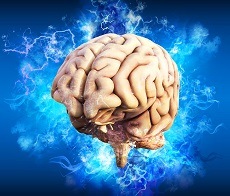 A team of physicians, neuroscientists and engineers at Duke University (Durham, USA) have reported multiple new strategies that use deep brain stimulation (DBS) to improve the symptoms of Parkinson’s disease. By simultaneously targeting two key brain structures and using a novel, self-adjusting device in an experimental study model, the team showed that they can efficiently target and improve disruptive Parkinson’s symptoms—as per a paper published in the journal Brain.
A team of physicians, neuroscientists and engineers at Duke University (Durham, USA) have reported multiple new strategies that use deep brain stimulation (DBS) to improve the symptoms of Parkinson’s disease. By simultaneously targeting two key brain structures and using a novel, self-adjusting device in an experimental study model, the team showed that they can efficiently target and improve disruptive Parkinson’s symptoms—as per a paper published in the journal Brain.
DBS has proved to be an effective yet imperfect therapy for addressing advanced Parkinsonian symptoms like tremors and stiffness, particularly in cases where medication does not provide sufficient treatment. Research groups like the Duke University team have continually sought to explore ways of improving DBS therapy, and overcoming the limitations associated with traditional targeted stimulation.
“Physicians place the electrodes for DBS in either the subthalamic nucleus or the globus pallidus, which are two structures in the brain closely associated with movement,” said Dennis Turner (Duke University School of Medicine [DUSM], Durham, USA), senior author of the recent Brain publication. “There are benefits to both locations on their own depending on the patient’s symptoms, but we believed placing the electrodes at both locations could be complementary, and [may] help reduce medication doses and side-effects, as well as [implementing] a completely new approach to adaptive DBS.”
Beyond just increasing the area of stimulation, the team wanted to explore whether a technique called adaptive DBS could make their system more efficient. In traditional DBS, a physician sets key electrical parameters—such as the amplitude, pulse frequency and pulse duration—to best treat symptoms while minimising side-effects. Those parameters may stay the same for days, weeks, months and even years, depending on the patient’s response. However, according to Warren Grill (Duke Biomedical Engineering, Durham, USA), these unchanging parameters are far from optimal.
“The amount of stimulation a person living with Parkinson’s needs changes, depending on their medications or activity levels,” he explained. “A patient will need more stimulation if they are walking their daughter down the aisle at her wedding than if they are just watching TV. An adaptive system is like a smart thermostat in your office that makes adjustments based on the temperature outside.”
To implement their bespoke approach, the team worked with experimental technology provided by Medtronic to create their own adaptive DBS techniques. By programming the device to sense and record key biomarkers and brain activity in the patient, the researchers developed a system that can adjust the parameters of stimulation automatically to provide optimal symptom relief throughout the day. The team tested their strategies in a clinical trial involving six patients aged 55–65 years, each of whom had varying symptoms of Parkinson’s disease.
Initially, the researchers spent two years observing and testing the efficacy of stimulating both the subthalamic nucleus and the globus pallidus with standard, continuous DBS. The results were measured using a combination of patient feedback, tracking the amount of time a patient could move without experiencing involuntary movements, and recording how much a patient could reduce their medication without experiencing symptoms.
During this period, the team also ran experiments to establish the parameters for an adaptable DBS system. They studied a specific frequency of brain activity, called beta oscillations, in the subthalamic nucleus. Previous research had shown that a high level of beta oscillations is linked to the slow, halting movement seen in most cases of Parkinson’s.
“We were able to test different levels of stimulation to determine the optimal levels of beta oscillations that would improve symptoms under different circumstances,” said Stephen Schmidt (Duke University, Durham, USA). “This helped us establish the initial settings for the adaptive DBS, and allowed us to compare how the adaptive and standard DBS operated in a home setting.”
After two years of study with the adaptive system, the team found that targeting the subthalamic nucleus and the globus pallidus at the same time led to a greater degree of improved motor symptoms as compared to targeting either region alone. The team also found that the adaptive DBS applied less stimulation but was just as effective as dual-target, continuous DBS in both clinical and home settings.
“Clinically, the patients are doing phenomenally,” noted Kyle Mitchell (DUSM, Durham, USA). “Looking at their rating scales, they are doing better than the average DBS patient when both target areas are stimulated. We’re not only seeing excellent clinical responses to dual-target stimulation, but we’re also able to integrate this adaptive, smart tool into the brain that can at least match this clinical response. It’s very exciting.”
Spurred on by these initial successes, the team is planning to further optimise adaptive DBS and pursue additional testing for the next stage of their clinical trials.
“This tool has great potential down the road for making DBS a more tailored and elegant therapy,” said Grill. “This is very promising research for the field of DBS, and it couldn’t have been done without the six participants who agreed to undergo this experimental work, as well as their families and caregivers. We are grateful for their significant contribution to this effort.”













